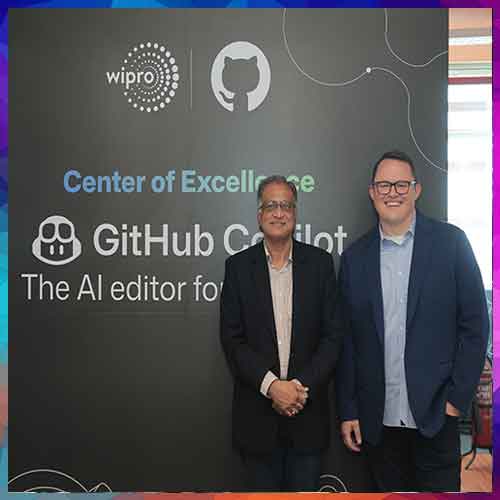Cloud adoption is expected to rise in 2023
2022-12-24
by Sajan Paul, Managing Director & Country Manager, India & SAARC, Juniper Networks
Cloud computing has become a crucial tool for businesses, the government, and consumers since the pandemic. It is not just the technology that supports digital transformation, but it also fosters creativity among ecosystem actors and teamwork among them. Cloud computing has the ability to alter the Indian economy technologically and make it more robust and inclusive as it competes to become a $1 trillion digital economy by 2026.
Cloud adoption is expected to rise in 2023, with digital innovation leading the top business objectives for Indian companies. The overall India public cloud services market is expected to reach $13.0 billion by 2026, growing at a CAGR of 23.1% for 2021-26. Cloud computing is gaining traction across industries as a result of the requirement for agility, flexibility, and speedier access to digital technology. Furthermore, the need to effectively exploit data is paramount, and organizations may do so with access to cloud-based technology. Companies are already realizing that, and it’s bringing into focus the need to handle multi-cloud connectivity. It’s a short step to move from lifecycle management to centralized control and policy management, which will give rise to more marketecture-led decisions, where the future is considered just as much as today.
As cloud technologies continue to be essential for staying at the top of the ladder, having a robust digital immune system in place as part of the business model has become critical. This is echoed by Gartner who have highlighted that digital immune systems are shaping up to become one of the top business priorities for the enterprises in 2023. A digital immune system harnesses observability, AI driven automation and extreme design and testing. It delivers resilient systems that mitigate operational and security risks, which will be crucial as more enterprises embrace the cloud.
The global low code no code industry is anticipated to grow
The continued pursuit of low- and no-code applications will put further stress on a networking industry struggling to keep up. The demand for hyper-automation and IT modernization has grown, but organizations have struggled to align with these trends due to the current shortage of developer talent. As a result, operational inefficiencies persist, and time-to-market a critical component for organisations seeking to remain competitive is jeopardized. Low-code and no-code software development technologies have developed as feasible and practical alternatives to the traditional development method to solve these difficulties. Shadow IT has been a problem for decades. The equivalent in the app space is the whole no-code movement. When teams can build their own applications without going through centralized development organizations, artisan efforts will quickly expose operational slowness. “I have what I need. Now I just need connectivity.” When the answer to that is to file a helpdesk ticket and wait a few weeks until the next change window, there will be natural tension in the system. This will leave companies looking to speed up operations or face existential questions about why their legacy decisions have gotten them here.
The global low code no code industry is anticipated to grow between 2021 and 2025 at a CAGR of 28.1%, according to NASSCOM. The pandemic has altered how businesses function, and this is visible in India as well. Indian businesses are currently trying to completely digitize all of their business procedures. To maintain a consistent level of service for both customers and employees, all manual interactions and paper-intensive operations must be completely digitalized. As a result, platforms with little or no code are adopted with significant financial investment. These might be low-code platforms for applications, low-code platforms for data science, or low-code platforms for cognitive applications. These platforms reduce the go-to-market time by 70% and make it extremely convenient to absorb the ever-changing need of the market. India currently has 150 low code no code players, the vast majority of which are bootstrapped startups.
Zero Trust is the essential security strategy in today’s hybrid work environment
With the ongoing threat of cyber-attacks, data security remains a major priority. According to the PwC's annual Global Digital Trust Insights, over 82 per cent of business executives in India foresee an increase in the cybersecurity budget in 2023. The survey also reported that 65 percent of business executives feel cyber criminals will significantly affect their organization in 2023 compared with 2022. Cyber resilience is not only key to survival of businesses but also a key driver of public trust. Traditional data protection techniques appear to operate on a "trust but verify" strategy, a perimeter-driven paradigm that trusts unrestricted network access to internal users while only the exterior or "untrusted network" requires security measures. Misplaced trust is frequently a weakness that migrates into an organization's IT ecosystem, which is where the Zero Trust Architecture (ZTA) paradigm comes into play. Zero Trust Architecture is a security paradigm that addresses the underlying flaw of traditional techniques by requiring only data outside of an entity to be safeguarded.
With companies/enterprises opting for lifetime work from home, the demand for cybersecurity has increased exponentially. Zero Trust is the essential security strategy in today’s hybrid work environment. Instead of assuming everything behind the corporate firewall is safe, the Zero Trust model assumes breach and verifies each request as though it originates from an open network. Regardless of where the request originates or what resource it accesses, Zero Trust teaches us to “never trust, always verify.” Zero Trust network reduces the complexity of securing your assets and makes it much easier to isolate problems.
See What’s Next in Tech With the Fast Forward Newsletter
Tweets From @varindiamag
Nothing to see here - yet
When they Tweet, their Tweets will show up here.




























